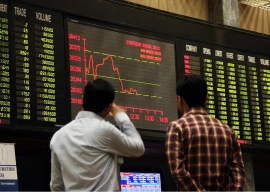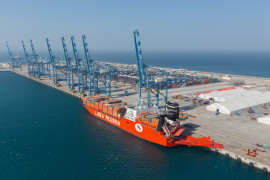
Financing to the sector jumped 21% to Rs1,174 billion in fiscal year 2018-19.
The State Bank of Pakistan (SBP) reported that FY19’s disbursement was 21% higher than Rs972.6 billion in the prior fiscal year. It was, however, slightly lower than the target of Rs1,250 billion for the year. “There was a marked decline in production of a number of major crops (in FY19),” the central bank said in its third quarterly report on the state of Pakistan’s economy issued recently.
Agriculture has potential to give boost to economy
Of the five major crops of Pakistan, four namely cotton, rice, sugarcane and wheat recorded a drop in their output in FY19. Maize was the only major crop which had a higher harvest.
Cotton output dropped 17.5% to 9.9 million bales, rice harvest fell 3.3% to 7.2 million tons, sugarcane crop declined 19.4% to 76.2 million tons and wheat production decreased 3.2% to 24.3 million tons. Maize production, however, improved 6.9% to 6.3 million tons, according to the central bank.
“This (drop in outputs) was largely attributed to reduction in area under cultivation, mainly caused by sowing-period water shortages, and hike in prices of basic inputs such as fertiliser, seeds and pesticides,” the SBP said.
Wheat output dropped due to rain damages, it added.
Sindh Abadgar Board Senior Vice President Syed Mahmood Nawaz Shah praised the central bank and commercial banks for providing higher financing in FY19 as well. He, however, was of the view that the loans remained much lower than what the agriculture sector required to flourish.
Punjab pivots to agriculture 2.0
“The financing stood insufficient at $7.33 billion (Rs1,174 billion) for agriculture production worth $54 billion in FY19,” he said. “The central bank itself claims the financing meets around 50% requirement of the sector.”
More importantly, around 80% of the financing goes to farmers in Punjab whereas the remaining 20% is disbursed among the remaining three provinces - Sindh, Khyber-Pakhtunkhwa and Balochistan.
“We need to improve the disbursement system nationwide,” he stressed. “We brought the issue to the notice of Prime Minister Imran Khan when he met the business community in Karachi about three weeks ago.”
The central bank said the outstanding loans in the agriculture sector increased 20% to Rs562.4 billion on June 30, 2019 compared to Rs469.4 billion on June 30, 2018.
Similarly, the agricultural credit outreach increased 8% to 4.01 million farmers at the end of June 2019 compared to 3.72 million last year. It covered over 90% of farmers against the target of 4.42 million farmers in the year under review.
To achieve these numbers, the SBP adopted a multifaceted strategy and made concerted efforts, which included sensitising banks to adopt agricultural financing as a viable business line, exploring new avenues of financing, value chain financing, mobilising e-credit, warehousing receipt financing, implementation of crop/livestock insurance and credit guarantee schemes for the farmers, etc.
“The achievement can be made due to integrated efforts of federal/provincial governments, the SBP, financial institutions and other stakeholders,” it said.
According to the breakdown, five major commercial banks collectively disbursed agricultural loans of Rs653.5 billion, which was slightly higher than their annual target of Rs651 billion for FY19.
Specialised banks disbursed Rs81.2 billion, which was 71.8% of their annual target of Rs113 billion. Fifteen domestic private banks as a group achieved 86.5% of target by disbursing Rs211.9 billion against the target of Rs245 billion.
Moreover, microfinance banks (MFBs) cumulatively disbursed Rs154 billion to small farmers in FY19. Similarly, microfinance institutions/rural support programmes collectively disbursed Rs34 billion to small and marginalised farmers.
Five Islamic banks provided Rs50 billion whereas Islamic windows of commercial banks disbursed Rs32.7 billion.
Published in The Express Tribune, August 6th, 2019.
Like Business on Facebook, follow @TribuneBiz on Twitter to stay informed and join in the conversation.


















COMMENTS
Comments are moderated and generally will be posted if they are on-topic and not abusive.
For more information, please see our Comments FAQ